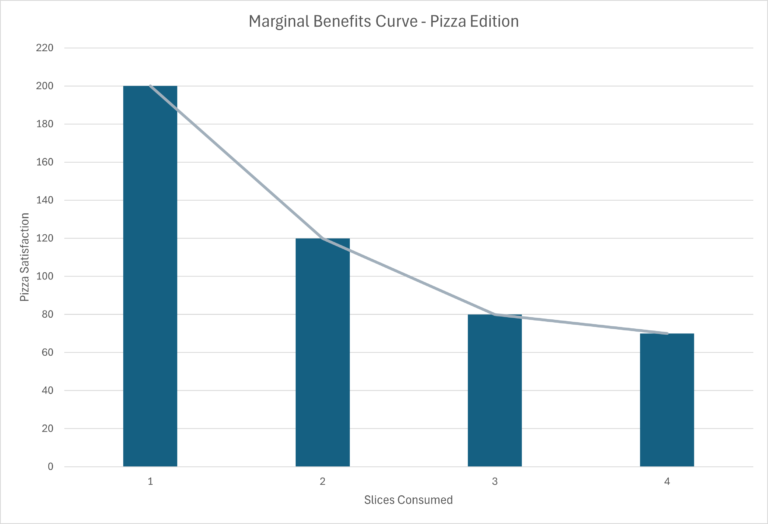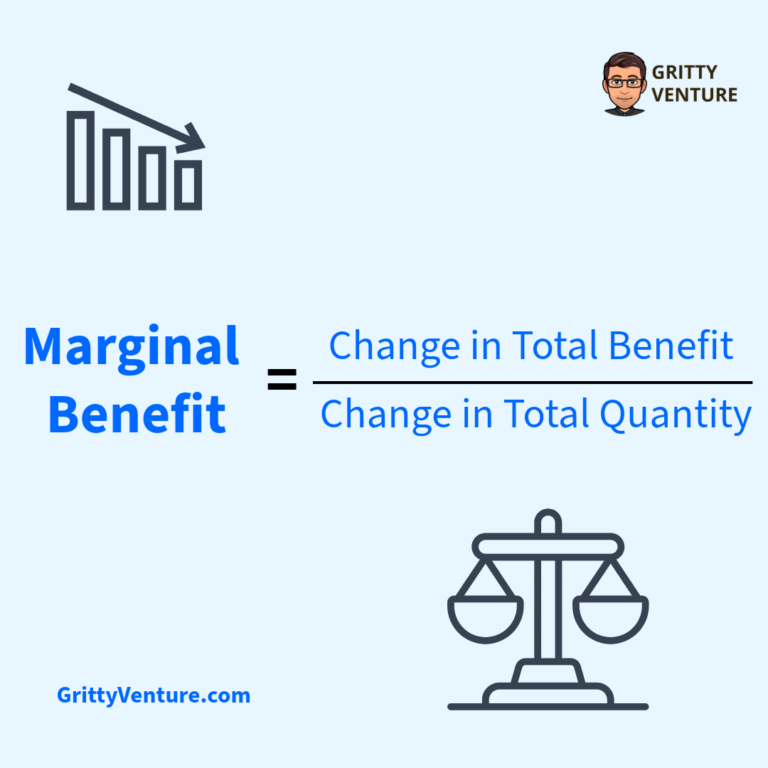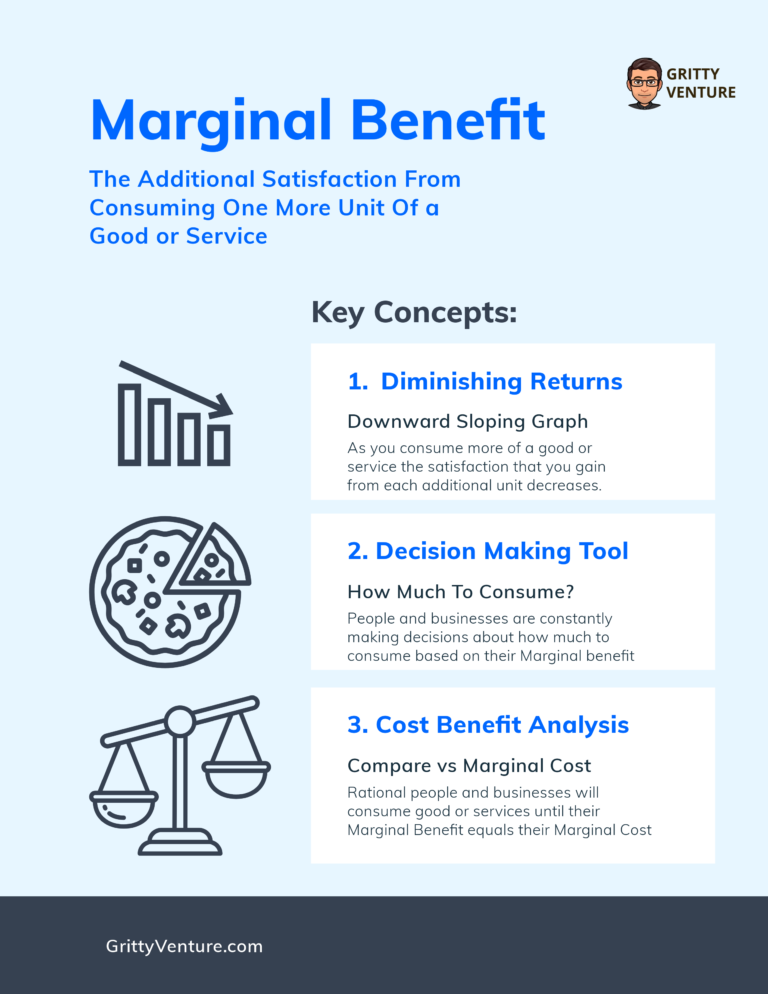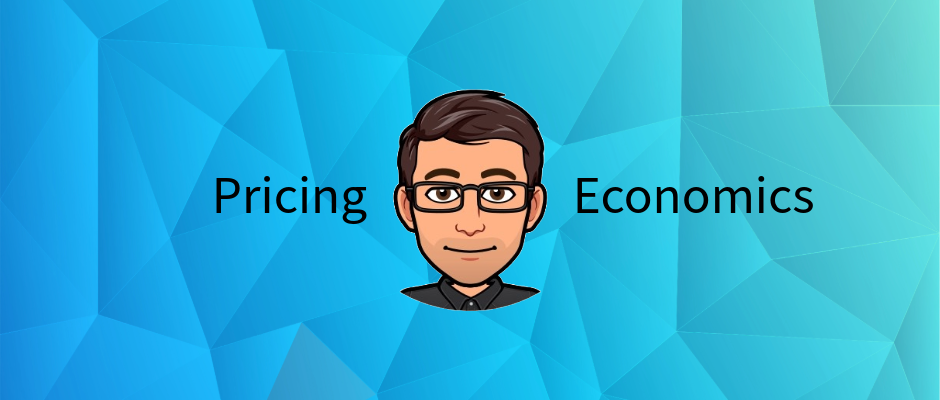We all make countless decisions every day, from the mundane (what to have for breakfast) to the significant (should I take that new job?). Underlying these decisions, whether we realize it or not, is a fundamental economic concept: marginal benefit. Understanding this concept can help you make more informed choices and appreciate how markets function.
So, what exactly is marginal benefit? Simply put, it’s the additional satisfaction or utility you get from consuming or producing one more unit of something. Think about your favorite food. That first slice of pizza might be incredibly satisfying. The second slice is still good, but maybe not quite as thrilling. By the time you get to the fourth or fifth slice, you might be feeling pretty full, and the marginal benefit of that extra slice is probably close to zero, or even negative (hello, food coma!).
This diminishing satisfaction as you consume more of something is known as the law of diminishing marginal utility. It’s a core principle in economics and explains why demand curves typically slope downwards. Consumers are willing to pay less for additional units of a good or service because the marginal benefit they receive decreases.
Take the chart below as an example. The Pizza Satisfaction scale is fairly high after eating one piece of pizza – clocking in at 200 units. The second piece of pizza only yields a satisfaction of 120 units for a marginal benefit of -80. The third? It only brings in 80 units for a marginal benefit of -40.
If we continued this out to 6, 8, maybe even 10 pieces of pizza the additional Pizza Satisfaction would eventually approach zero.

Qualities of the Marginal Benefit Curve
The marginal benefit curve graphically represents how the additional benefit changes as consumption increases. Here are some key characteristics:
Downward-Sloping Curve
- The marginal benefit curve typically slopes downward from left to right, reflecting the law of diminishing marginal benefit—as more of a good is consumed, the added benefit of each extra unit decreases.
- For example, the first slice of pizza is highly valuable, but by the fourth or fifth slice, the additional satisfaction is much lower. You can clearly see this above.
Steep vs. Gradual Slope
- A steep marginal benefit curve suggests that the additional benefit drops off quickly (e.g., luxury goods or indulgences like cake slices).
- A gradual slope means the benefit decreases more slowly (e.g., necessities like water, where extra consumption remains useful for a longer period).
Potential for Flat or Even Upward Slopes
- In rare cases, the marginal benefit curve might flatten or temporarily slope upward—such as in scenarios where acquiring a critical mass of a product increases its usefulness (e.g., collecting a full set of tools or completing a series of books).
Relationship to Demand Curve
- The marginal benefit curve is closely related to the demand curve because consumers’ willingness to pay for additional units depends on the benefit they receive.
- Businesses use this relationship to set optimal pricing strategies, ensuring that prices reflect the perceived benefit to customers.
Marginal Benefit Formula
The marginal benefit formula is very straightforward theoretically, but difficult to accurately calculate in practice due to the subjectivity of tastes and preferences. The formula for marginal benefit is:

Where:
- Change in Total Benefit is the difference in overall benefit received after consuming an additional unit.
- Change in Quantity is the increase in the number of units consumed.
Example Calculation
Let’s use the pizza example above again. The first slice brings you 200 units of satisfaction, while the second slice might bring 120 units. The marginal benefit of the second slice would be:
Marginal Pizza Benefit = (120 – 200 ) / 1 = – 80
This shows that while the second slice still provides satisfaction, it’s less than the first—illustrating the law of diminishing marginal benefit.
Understanding marginal benefit is crucial for businesses in setting prices and for consumers in making rational purchasing decisions. By analyzing how benefits change with consumption, both businesses and individuals can optimize their choices for maximum value.
Marginal Benefit Calculator
Below is a marginal benefit calculator that I have put together and is free to use. Simply include your email and it will take you to the calculation page.
Once on the calculation page, you can use the calculator without needing to submit your email (having a 2nd page helps control the spam).
If you do submit your email you will be taken to a private page on my website where you can access and download Excel files of all the calculators available today and access a link to the Private Facebook Group to continue the discussion (again, without spam!).
Real-World Applications of Marginal Benefit
Marginal benefit is not just a theoretical concept; it has numerous practical applications in different fields, including consumer behavior, business strategy, and public policy.
Consumer Behavior
- Consumers constantly evaluate marginal benefits in their daily lives. When deciding whether to buy an additional coffee or upgrade to a premium version of a service, they weigh the added benefits against the extra cost. Discounts and promotions often attempt to increase the perceived marginal benefit, making consumers more likely to make a purchase.
- For instance, a “Buy One, Get One Free” offer increases the marginal benefit of purchasing the first item by providing an additional unit at no extra cost. Consumers who initially hesitated to buy may find the deal enticing because the added benefit outweighs the additional expense.
Business Pricing Strategies
- Businesses use the concept of marginal benefit to set prices strategically. Companies segment customers based on their willingness to pay, often charging different prices for the same product to maximize revenue. This is evident in airline pricing, where economy seats and business-class seats are priced differently based on the perceived marginal benefit of comfort, flexibility, and additional services.
- Subscription-based businesses, such as streaming platforms, also apply this principle by offering tiered pricing. A basic plan may provide minimal features, while a premium plan includes additional benefits like higher resolution and offline downloads. Consumers evaluate whether the marginal benefit of upgrading justifies the higher cost.
Government Policy and Public Goods
- Governments consider marginal benefit when allocating resources and designing policies. Public services such as healthcare, education, and infrastructure projects are assessed based on their marginal benefits to society. Policymakers aim to allocate resources where the additional benefit to the public is the highest.
- For example, when determining whether to build a new highway, the government evaluates whether the reduced travel time and economic benefits outweigh the costs of construction and maintenance. Similarly, in environmental policies, regulations are designed by comparing the marginal benefits of reducing pollution against the marginal costs imposed on businesses and consumers.
Marginal Benefit and Economic Efficiency
Economic efficiency is achieved when resources are allocated in a way that maximizes total benefit. Marginal benefit plays a critical role in achieving this efficiency by guiding decision-makers toward optimal choices.
Allocative Efficiency
- Allocative efficiency occurs when goods and services are distributed in a way that maximizes societal welfare. This is achieved when the price of a good equals its marginal benefit. In competitive markets, firms adjust their production to match consumer demand, ensuring that resources are not wasted on producing items with low marginal benefit.
Productive Efficiency
- Firms aim to produce goods at the lowest possible cost while maintaining quality. By analyzing marginal benefit, businesses can determine the ideal production level. Overproduction leads to wasted resources, while underproduction results in unmet demand.
Consumer Surplus and Producer Surplus
- Consumer surplus represents the difference between what consumers are willing to pay and what they actually pay. When marginal benefit is high relative to price, consumer surplus increases. Producer surplus, on the other hand, measures the difference between the selling price and production cost. Understanding marginal benefit helps businesses maximize profits while ensuring fair pricing for consumers.
Marginal Benefit vs. Marginal Cost
Marginal benefit and marginal cost are two sides of the same coin. While marginal benefit measures the additional gain from consuming a product, marginal cost represents the extra expense incurred in producing one more unit. In an efficient market, rational decision-makers compare these two factors to optimize their choices.
The principle of marginal analysis suggests that individuals and firms should continue their activities up to the point where marginal benefit equals marginal cost (MB = MC). When marginal benefit exceeds marginal cost, there is room for further economic activity. However, if marginal cost surpasses marginal benefit, it signals inefficiency and suggests a reduction in consumption or production.
Marginal Benefit vs. Total Benefit
It’s crucial to distinguish between marginal benefit and total benefit. Total benefit is the overall satisfaction you get from consuming a certain quantity of something. While the marginal benefit might decrease with each additional unit, the total benefit can still increase, albeit at a decreasing rate. Think again about the pizza example. Even though the marginal benefit of each slice decreases, your overall satisfaction (total benefit) might still increase up to a point.
Challenges and Limitations of Marginal Benefit Analysis
While marginal benefit is a valuable concept, it has limitations. Measuring marginal benefit can be subjective, as individual preferences and external factors influence perceived value. Additionally, in cases of market failure, such as monopolies or externalities, marginal benefit may not align with social welfare.
For instance, in the healthcare sector, a life-saving drug may have an immense marginal benefit for patients but may be priced exorbitantly due to limited competition. Similarly, environmental issues like carbon emissions create negative externalities where the marginal benefit of industrial production does not account for broader societal costs.
Why is Understanding Marginal Benefit Important?
Understanding marginal benefit empowers you to make more rational decisions. By considering the additional benefit you receive from each choice, you can avoid falling prey to the trap of overconsumption or missing out on opportunities. It’s a powerful tool for both individuals and businesses to optimize their choices and maximize their well-being or profits.
So, the next time you’re faced with a decision, big or small, take a moment to think about the marginal benefit. It might just change the way you see the world, and certainly, the way you order pizza.




